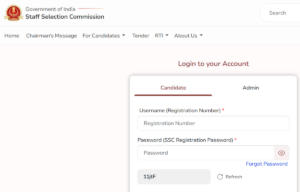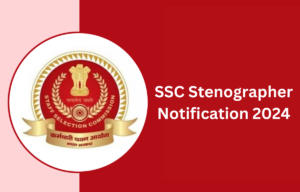Daily Current Affairs for UPSC 2023
Q) Which one of the following statements is correct with reference to the Palghat Gap?
- It is a low mountain pass in the Eastern Ghats of India.
- The Bharathappuzha River flows through the Palghat Gap.
- It is a natural corridor between Karnataka and Goa.
- The vegetation in the Palghat Gap is classified as deciduous forest.
Daily Current Affairs for UPSC – 13 May April 2023
Explanation:
- Option (1) is incorrect: The Palghat Gap, also known as the Palakkad Gap, is a low mountain pass in the Western Ghats of India. It is located in the southern state of Kerala, near the town of Palakkad (formerly known as Palghat), which gives the gap its name.
- Option (2) is correct: The Bharathappuzha River (also known as the Nila or Ponnani River) flows through the Palghat Gap. The Gap is a geological shear zone that runs from east to west. Shear zones are weak regions in the earth’s crust-this is the reason why tremors are sometimes felt in Coimbatore. The origin of the Palghat Gap also stems from the drift of continental shelves after Australia and Africa broke off from the Gondwana landmass.
- Option (3) is incorrect: It acts as a natural corridor between the states of Kerala and Tamil Nadu, providing a passage for transportation and communication. It acts as a gateway for the southwest monsoon winds, which bring heavy rainfall to Kerala during the monsoon season. The gap allows the monsoon winds to penetrate into the eastern side of the Western Ghats, influencing the climate and precipitation patterns in the region.
- Option (4) is incorrect: In contrast to the tropical rainforests of the Western Ghats, the vegetation in the Palghat Gap is classified as dry evergreen forest. It also marks a divide in the flora and fauna of the region. For example, several species of frogs are found only on one side of the Palghat Gap.
Q) Consider the following statements about the Central Bureau of Investigation (CBI):
- The CBI is a statutory body under the Ministry of Home Affairs.
- The CBI director is appointed by a committee headed by the Prime Minister of India.
- It is responsible for coordinating the activities of INTERPOL in India.
Which of the statements given above is/are correct?
- 1 and 2 only
- 2 and 3 only
- 1 and 3 only
- 1, 2 and 3
Explanation:
- Statement 1 is incorrect: The CBI was set up in 1963 by a resolution of the Ministry of Home Affairs based on the recommendations of the Santhanam Committee on Prevention of Corruption (1962–1964). CBI is not a statutory body. It derives its powers from the Delhi Special Police Establishment Act, 1946.
- Statement 2 is correct: Director is responsible for the administration of the organization. Till 2014, the CBI Director was appointed on the basis of the DSPE Act, 1946. In 2014, the Lokpal Act provided a committee for appointment of CBI Director, headed by Prime Minister, Leader of Opposition/ Leader of the single largest opposition party, Chief Justice of India/ a Supreme Court Judge. Director of CBI has been provided security of two year tenure, by the CVC Act, 2003.
- Statement 3 is correct: The CBI is the main investigating agency of the Central Government. It plays an important role in the prevention of corruption and maintaining integrity in administration. It provides assistance to the Central Vigilance Commission and Lokpal. It is the nodal police agency in India which coordinates investigations on behalf of INTERPOL Member countries.
Q) With reference to ‘None of the Above’ (NOTA) option, consider the following statements:
- The option of NOTA is also available in local elections.
- It was used for the first time in the 2014 general elections.
- The Conduct of Elections Rules, 1961 introduced the idea of a negative vote before NOTA.
Which of the statements given above is/are correct?
- 1 and 2 only
- 1 and 3 only
- 3 only
- 1, 2 and 3
Explanation:
- Statement 1 is incorrect but statement 3 is correct: Prior to NOTA, the Section 49 (O) of the Conduct of Elections Rules, 1961, allowed a voter to enter his electoral serial number in Form 17A and cast a negative vote. The Supreme Court in PUCL vs. Union of India Judgement 2013 allowed the use of NOTA in the context of only elections to the Lok Sabha and the respective state assemblies. It is not allowed in local elections.
- Statement 2 is incorrect: The NOTA option allows a citizen not to vote for any candidates who are contesting the elections. The option has been provided since 2009. The NOTA option was used for the first time in the 2013 assembly elections held in four states (Chhattisgarh, Mizoram, Rajasthan and Madhya Pradesh), and the Union Territory of Delhi. According to Election Commission of India, more than 2.6 lakh voters used the ‘none of the above’ (NOTA) option during the recently concluded Karnataka election.
Q) Consider the following statements about the Central Equipment Identity Register (CEIR):
- The CEIR system will enable people to track their lost mobile phones.
- CEIR will also allow for the detection of cloned mobile phones across all telecom networks.
- It will give access to the IMEI number of the device to telecom operators.
Which of the statements given above is/are correct?
- 1 and 2 only
- 2 and 3 only
- 3 only
- 1, 2 and 3
Explanation:
- Statements 1 and 2 are correct: Central Equipment Identity Register (CEIR) system will enable people to block and track their lost mobile phones. CEIR system is equipped with an in-built mechanism that allows it to detect the use of cloned mobile phones across all telecom networks, thereby aiding the government in preventing revenue loss to the exchequer. The system has been designed to discourage mobile phone theft and facilitate the tracing of lost or stolen mobiles to the police, detection of cloned or counterfeit mobiles, and restriction of the use of such cloned mobiles.
- Statement 3 is correct: CEIR system will provide telecom operators with access to both the IMEI number of the device and the associated mobile number. CEIR system will safeguard the interests of consumers by providing them with information related to fake and cloned mobile phones, thereby preventing them from falling prey to fraudulent activities.
Q) With reference to ‘Millets’, consider the following statements:
- Millets can tolerate temperatures from 30°C to 35°C.
- Ragi constitutes about three-fifths of all the millet production in India.
- Fermentation can improve the overall nutritional characteristics of millets.
Which of the statements given above is/are correct?
- 1 and 2 only
- 2 only
- 1 and 3 only
- 2 and 3 only
Explanation:
- Statement 1 is correct but statement 2 is incorrect: The UN Food and Agriculture Organization (FAO) has declared 2023 to be the ‘International Year of Millets’. Millets are a type of cereal crop that are cultivated worldwide, particularly in the tropical parts of Africa and Asia. Millets are adapted to grow in arid and semi-arid regions with low and erratic rainfall.
- They can tolerate a range of temperatures, typically from 30°C to 35°C.
- Millets have a wide adaptability to different soil types, from poor to fertile, and can tolerate some degree of alkalinity.
- Millets require less water compared to other grains and can grow in regions with as little as 250-300mm of rainfall. This makes them a suitable crop for regions facing water scarcity and drought-like conditions.
- According to the Agricultural and Processed Foods Development Authority, India is the world’s largest producer of millets. In 2021-2022, the country accounted for 40.51% of the world’s pearl millet production and 8.09% of sorghum.
- Within India, pearl millet made up 60% of all the millet production, sorghum 27%, and ragi 11%.
- Statement 3 is correct: Millets are sought after because they have high nutritional value and can grow reliably in harsh environmental conditions that are becoming more common due to the climate crisis. Millets are drought-tolerant, adapted to warm weather, and require low moisture, making them particularly efficient consumers of water. They can grow well in loamy soil and can thrive on marginal land in upland and hilly regions. Germination and fermentation have been found to improve the overall nutritional characteristics of millets.


 SSC CGL Apply Online 2024, Last Date is ...
SSC CGL Apply Online 2024, Last Date is ...
 SSC Stenographer 2024 Notification Out a...
SSC Stenographer 2024 Notification Out a...
 IB SA MTS Final Result 2024 Out at mha.g...
IB SA MTS Final Result 2024 Out at mha.g...

















